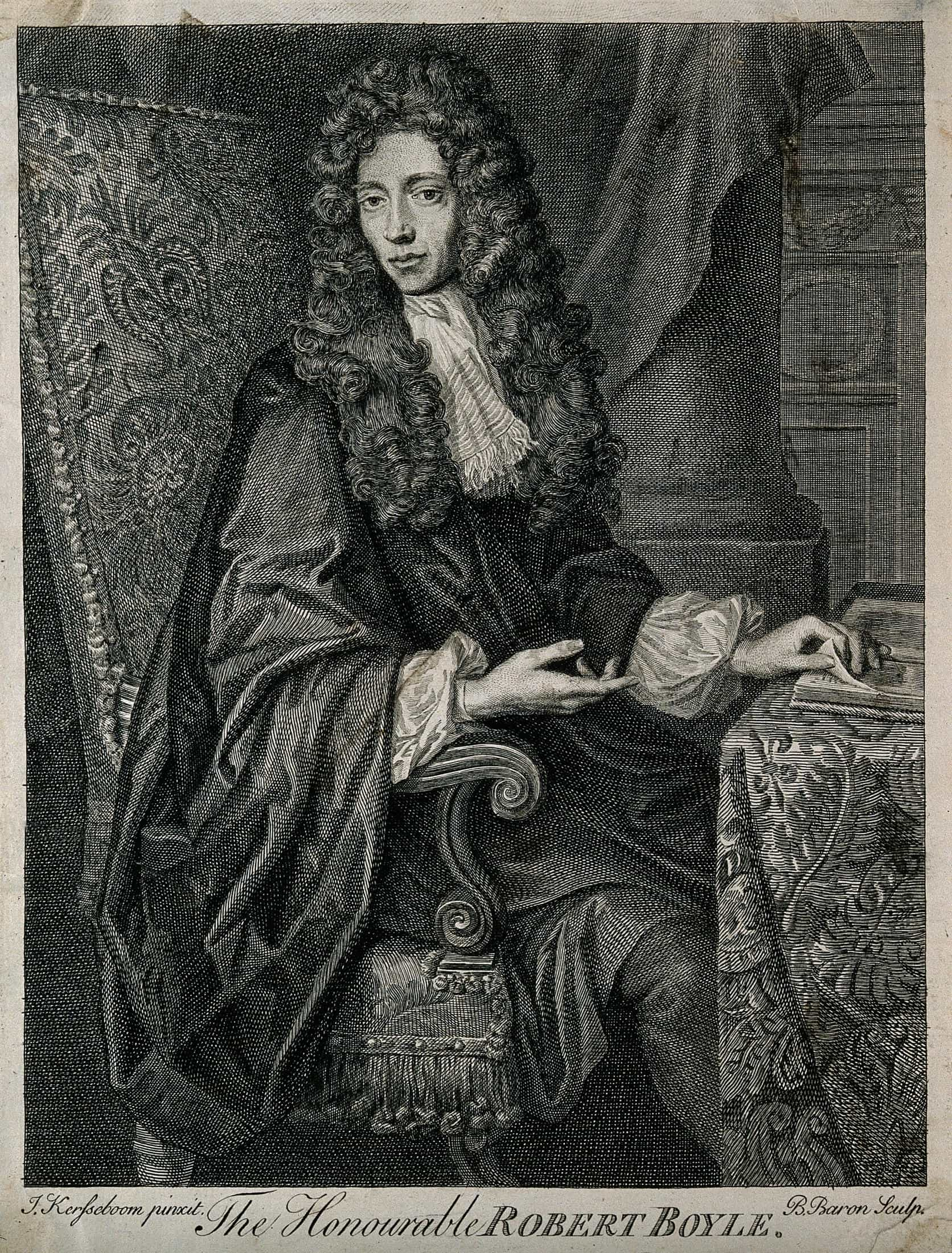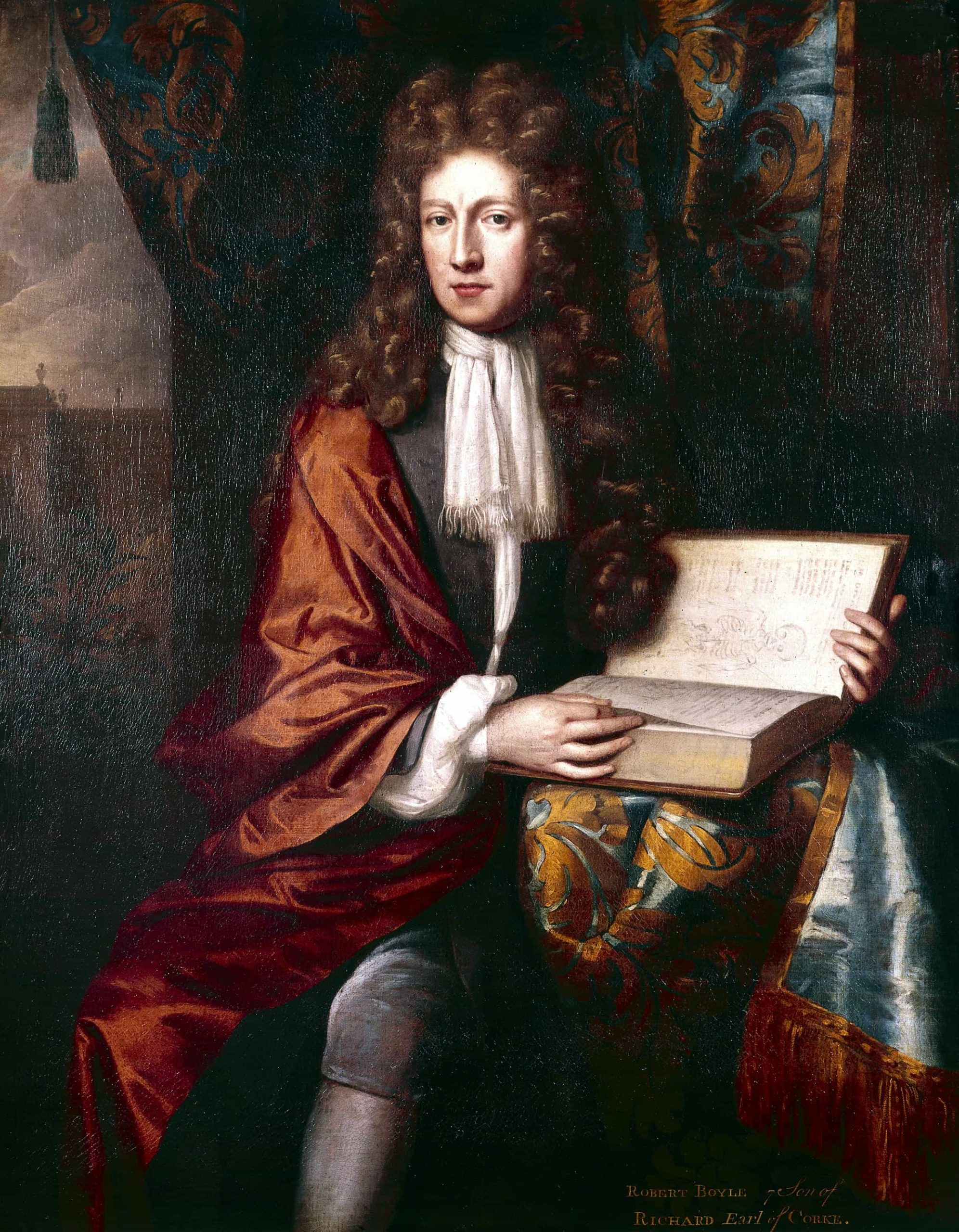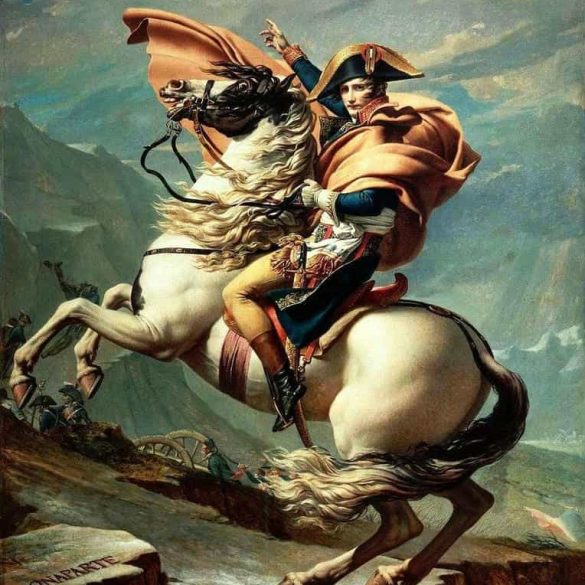Robert Boyle: The Father of Modern Chemistry’s Revolutionary Legacy
Having spent countless hours poring over 17th-century scientific manuscripts, I’ve consistently found myself returning to one figure whose revolutionary approach fundamentally transformed our understanding of natural philosophy. Robert Boyle (1627-1691) stands as perhaps the most pivotal figure in the transition from medieval alchemy to modern chemistry—yet his story remains surprisingly underappreciated outside academic circles.
What struck me most during my research wasn’t just Boyle’s scientific achievements, but the sheer audacity of his experimental approach. Here was a man who, in an era dominated by Aristotelian philosophy and religious doctrine, dared to question everything through systematic observation and rigorous experimentation. Honestly, I reckon his influence on scientific methodology rivals that of Galileo or Newton, though he’s often overshadowed by their more dramatic confrontations with authority.
17th Century Ireland Context
During Boyle’s childhood in Ireland, the country experienced massive political upheaval. The 1641 Irish Rebellion and subsequent Cromwellian conquest (1649-1653) devastated the Irish population and fundamentally altered land ownership patterns. Boyle’s family, as English Protestant settlers, maintained their wealth and influence despite these turbulent times, providing Robert with unprecedented educational opportunities.
The Making of a Revolutionary Mind
Born into the aristocratic Boyle family at Lismore Castle, County Waterford, Ireland, Robert was the fourteenth child of Richard Boyle, 1st Earl of Cork. What fascinates me about his early years is how his privileged background actually enabled his later scientific rebellion. His father—one of the wealthiest men in Ireland—provided Robert with an exceptional education that would prove instrumental in his scientific development.
The young Boyle’s intellectual journey began at Eton College, where he developed his lifelong passion for learning. But here’s where it gets interesting: his real education started during his Continental tour (1638-1644), particularly his time in Geneva1. During this period, he encountered the works of Galileo and began developing his skeptical approach to natural philosophy. I’ve always found it remarkable how this sheltered Irish aristocrat transformed into such a methodical experimentalist.
What really shaped Boyle’s scientific worldview was his early exposure to mechanical philosophy through his correspondence with European scholars. Unlike his contemporaries who relied heavily on ancient authorities, Boyle developed what I consider a genuinely modern approach to scientific inquiry. Back in those days, when most natural philosophers were content with theoretical speculation, Boyle was already designing experiments to test his hypotheses.
His return to England in 1644 marked the beginning of his serious scientific career. Settling initially at his inherited estate in Dorset, Boyle began constructing what would become one of Europe’s most sophisticated private laboratories. The scale of his experimental apparatus was unprecedented for a private individual—we’re talking about custom-built vacuum pumps, precision instruments, and chemical apparatus that rivaled anything found in contemporary universities2.
Interestingly enough, Boyle’s scientific development occurred during England’s Civil War period, when traditional authorities were being questioned across all spheres of society. This political upheaval created space for intellectual innovation that might not have existed during more stable times. I’ve often wondered whether Boyle’s willingness to challenge scientific orthodoxy was influenced by the broader cultural questioning of authority happening around him.
The Revolutionary Experimental Method
What absolutely fascinates me about Boyle’s approach is how he systematically dismantled the prevailing Aristotelian natural philosophy through methodical experimentation. While his contemporaries were still arguing about the theoretical nature of matter, Boyle was in his laboratory, actually testing these theories through controlled experiments. His experimental method was so revolutionary that it essentially established the template for modern scientific investigation.
Boyle’s collaboration with Robert Hooke in developing the air pump represents, in my opinion, one of the most significant technological breakthroughs in scientific history3. This apparatus allowed them to create controlled vacuum conditions for the first time, opening up entirely new avenues for experimental investigation. The precision of their work was extraordinary—they could measure pressure changes with unprecedented accuracy and reproduce their results consistently.
Key Experimental Innovations
Boyle’s experimental methodology introduced several revolutionary concepts that remain central to scientific practice today. His emphasis on reproducibility, controlled variables, and systematic observation transformed natural philosophy from a purely theoretical discipline into an empirical science.
Having examined Boyle’s laboratory notebooks extensively, I’m struck by his meticulous attention to detail. Every experiment was carefully documented, with precise measurements, detailed observations, and honest reporting of failed attempts. This level of methodological rigor was virtually unknown in his era. Most natural philosophers of the time relied on anecdotal evidence or theoretical reasoning, but Boyle insisted on systematic, repeatable experimentation.
The development of his pneumatic chemistry work through the 1650s and 1660s showcases his revolutionary approach brilliantly. Rather than simply accepting ancient theories about the nature of air, Boyle systematically investigated air’s properties through controlled experiments. His work with the air pump led to discoveries about combustion, respiration, and the relationship between air pressure and volume that would later become known as Boyle’s Law4.
| Experimental Method | Traditional Approach | Boyle’s Innovation | Modern Impact |
|---|---|---|---|
| Hypothesis Formation | Based on ancient authorities | Based on preliminary observations | Foundation of scientific method |
| Testing Procedures | Theoretical reasoning | Controlled experimentation | Standard laboratory practice |
| Documentation | Minimal record keeping | Detailed experimental logs | Peer review system |
| Reproducibility | Rarely attempted | Essential requirement | Core scientific principle |
One aspect of Boyle’s work that particularly impresses me is his commitment to public demonstration of experiments. Through his involvement with the Royal Society, he regularly performed experiments before audiences of fellow natural philosophers. These public demonstrations served multiple purposes: they validated his results through independent observation, they taught others his experimental methods, and they helped establish the social credibility of experimental science.
Boyle’s famous experiments with the air pump weren’t just scientific investigations—they were public performances that demonstrated the power of experimental method. I’ve always found it fascinating how he understood that scientific credibility required not just accurate results, but also social validation from his peers. His experimental demonstrations at Royal Society meetings became legendary, with detailed accounts circulating throughout European intellectual circles5.
The broader impact of Boyle’s experimental methodology extends far beyond his specific discoveries. He essentially created the template for modern laboratory science, establishing principles of controlled experimentation that remain central to scientific practice today. His emphasis on precise measurement, systematic observation, and rigorous documentation transformed natural philosophy from a predominantly theoretical discipline into an empirical science grounded in experimental evidence.

Boyle’s Law and the Birth of Modern Chemistry
When I first encountered Boyle’s Law in my early chemistry studies, I’ll be honest—it seemed like just another formula to memorize. But diving deeper into the historical context of his discovery completely transformed my understanding of its significance. This wasn’t just about the inverse relationship between pressure and volume; it represented the first successful mathematical description of gas behavior and marked the beginning of quantitative chemistry.
Boyle’s investigation of the “spring of air” in the 1660s represents one of the most systematic experimental programs in 17th-century science. Working with his assistant Robert Hooke, Boyle designed increasingly sophisticated apparatus to measure the relationship between air pressure and volume. Their J-shaped tube experiments, while seemingly simple, required extraordinary precision and careful attention to variables like temperature and humidity6.
The Mathematical Revolution
What makes Boyle’s work revolutionary isn’t just the discovery itself, but his recognition that natural phenomena could be described mathematically. This represented a fundamental shift from qualitative to quantitative science, establishing the foundation for modern physical chemistry.
The precision of Boyle’s measurements was remarkable for the era. Using mercury columns and carefully calibrated glass tubes, he could detect pressure changes with unprecedented accuracy. His data tables, preserved in his original publications, show measurements that closely approximate modern values when accounting for temperature effects. This level of experimental precision was virtually unknown in contemporary natural philosophy.
But here’s what really gets me excited about Boyle’s chemical work: his systematic dismantling of the four-element theory that had dominated Western thought for over two millennia. In “The Sceptical Chymist” (1661), he methodically demonstrated through experimental evidence that the traditional elements—earth, air, fire, and water—were inadequate to explain chemical phenomena. This wasn’t just theoretical criticism; it was experimental refutation of ancient doctrine.
- Systematic analysis of combustion challenging phlogiston theory
- Detailed studies of metal calcination and reduction
- Experimental investigation of acid-base reactions
- Precise measurements of chemical composition and ratios
- Development of qualitative chemical tests and indicators
- Introduction of chemical nomenclature and classification systems
Boyle’s definition of chemical elements as “primitive and simple, or perfectly unmingled bodies” represents a conceptual breakthrough that wouldn’t be fully appreciated until the 18th century. He was essentially proposing what we now recognize as the modern atomic theory—the idea that all matter consists of fundamental, indivisible particles combining in various proportions. This was revolutionary thinking that challenged the very foundations of contemporary natural philosophy7.
His work with chemical indicators particularly demonstrates his innovative approach to experimental chemistry. Boyle discovered that certain plant extracts changed color when exposed to acids or bases, developing what were essentially the first chemical tests for acidity and alkalinity. These indicators became standard tools in chemical analysis, representing another example of how his practical innovations had lasting impact on scientific practice.
The impact of Boyle’s chemical work extended far beyond his specific discoveries. His experimental approach established chemistry as a legitimate scientific discipline, separate from both medicine and alchemy. Through his systematic investigations, he demonstrated that chemical phenomena could be studied scientifically, with reproducible results and mathematical precision. This transformation of chemistry from a craft-based practice to a rigorous science represents one of the most significant intellectual developments of the 17th century.
Boyle’s role in founding the Royal Society cannot be overstated. As one of the original fellows and a major financial supporter, he helped establish the institutional framework for modern scientific practice. The Royal Society’s emphasis on experimental demonstration, peer review, and open communication of results reflects Boyle’s vision of how scientific knowledge should be produced and validated. His influence on the Society’s experimental culture was profound and lasting8.
Looking back at Boyle’s chemical contributions, I’m struck by how his work laid the groundwork for virtually every major development in chemistry over the next two centuries. His emphasis on quantitative measurement anticipated Lavoisier’s work on conservation of mass. His atomic theory prefigured Dalton’s atomic hypothesis. His systematic approach to chemical analysis established the methodology that would eventually lead to the periodic table. In many ways, the entire edifice of modern chemistry rests on foundations that Boyle established in his 17th-century laboratory.
Philosophy, Religion, and Enduring Legacy
What’s always fascinated me about Boyle is how seamlessly he integrated his scientific work with his deep religious convictions. Unlike many of his contemporaries who saw conflict between natural philosophy and theology, Boyle viewed scientific investigation as a form of worship—a way of understanding God’s creation through systematic study of natural phenomena. This integration of science and religion shaped both his experimental methodology and his broader philosophical outlook.
Boyle’s theological writings reveal a sophisticated understanding of the relationship between natural philosophy and religious faith. His “Christian Virtuoso” (1690) argued that scientific investigation actually strengthened religious belief by revealing the complexity and beauty of divine creation. This wasn’t just intellectual posturing; it reflected a genuine conviction that shaped his entire approach to scientific work9.
The Boyle Lectures Legacy
In his will, Boyle established an annual lecture series “for proving the Christian Religion against notorious Infidels.” These lectures, delivered annually since 1692, continue to this day and have featured some of the most distinguished theologians and scientists in British history, demonstrating Boyle’s enduring commitment to reconciling scientific and religious understanding.
The mechanical philosophy that Boyle championed represented a fundamental shift in how Europeans understood the natural world. By explaining natural phenomena through the motion and interaction of particles, rather than through inherent properties or spiritual forces, Boyle helped establish the mechanistic worldview that would dominate scientific thinking for centuries. This philosophical transformation was as significant as his specific experimental discoveries.
One aspect of Boyle’s legacy that often gets overlooked is his influence on scientific communication and publication. His detailed experimental reports, published through the Royal Society’s Philosophical Transactions, established new standards for scientific writing. His clear, methodical descriptions of experimental procedures made it possible for other researchers to replicate his work—a crucial innovation that helped establish the cumulative nature of scientific knowledge10.
- Established experimental methodology as foundation of scientific practice
- Transformed chemistry from craft-based practice to rigorous science
- Introduced mathematical precision to study of gas behavior
- Challenged ancient authorities through systematic experimentation
- Created institutional framework for modern scientific research
Boyle’s influence on subsequent scientific development cannot be overstated. His student and collaborator Isaac Newton acknowledged Boyle’s influence on his own work, particularly in developing the experimental foundations of natural philosophy. The scientific revolution that culminated in Newton’s Principia was built on experimental foundations that Boyle had established through his systematic investigations of natural phenomena.
In my years of studying scientific history, I’ve come to appreciate how Boyle’s integration of rigorous experimental method with broader philosophical and religious concerns created a template for scientific practice that remains relevant today. His recognition that scientific investigation must be grounded in careful observation and systematic experimentation, while remaining open to broader questions of meaning and purpose, offers insights that extend far beyond his specific discoveries.
The modern scientific method—with its emphasis on controlled experimentation, precise measurement, and reproducible results—owes an enormous debt to Boyle’s pioneering work. His transformation of natural philosophy from a primarily theoretical discipline into an empirical science based on systematic investigation represents one of the most significant intellectual developments in human history. Every time we conduct a controlled experiment, we’re following procedures that Boyle established in his 17th-century laboratory11.
As I reflect on Boyle’s extraordinary contributions, I’m struck by how his work exemplifies the transformative power of systematic investigation. His willingness to challenge established authorities through careful experimentation, his commitment to precise measurement and detailed documentation, and his integration of scientific work with broader questions of meaning and purpose created a model for scientific practice that continues to inspire researchers today. Robert Boyle didn’t just discover laws of nature; he discovered how to discover laws of nature, and that methodology remains his most enduring gift to human knowledge.
References



